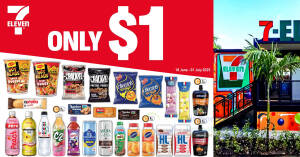
![]()
Uh oh, the deal has ended
Don't miss out again, get the latest news via
![]()
| Starts | 27 Sep 2012 (Thu) | Ends | 3 Oct 2012 (Wed) |
|---|---|---|---|
| Location | Harvey Norman |
 We are now on Telegram. Click to join We are now on Telegram. Click to join |
Modern storage devices are more than mere backup platforms. They complement multimedia devices such as tablets, laptops and smartphones, offering added functionality on top of their storage capabilities.
Here are some factors from Harvey Norman to consider when buying storage devices as well as some offers
Portability – If you often travel overseas, or are always on the go, consider devices that are light and small enough to carry around with you. Wi-Fi capability and battery-powered devices make for great and convenient travel companions.
Cutting ties – Devices with cloud-storage capability allow content to be accessed effortlessly. Add a cloud-storage device to your home network and you’ll be able to access files through smartphones, tablets and computers even if you’re not at home how’s that for cutting the cables that bind?
File sharing – If you download and share large amounts of digital content on your home network, consider network-attached storage. It allows you to share files at the click of a button, so there’s no need to pass around a hard disc or thumbdrive. Some storage devices even have the bandwidth to stream more than one Full-HD (1,920 x 1,080) movie to multiple devices. Such user-friendly features really do help redefine the term media sharing.
Easy backup – Backing up data doesn’t have to be a chore as some devices automate the process, and can back up files at regular intervals, or even save or share photos automatically from your social network accounts.
Streaming capability – Some hard drives have built-in media servers to stream content to any DLNA-certified multimedia devices. So you can watch your child’s birthday party video, or show off vacation pictures on your TV or laptop.
Capacity – Storage devices with larger capacities usually cost more, but are also usually cheaper on a cost-per-megabyte basis. And since largercapacity devices take longer to fill up, you may not need to buy a new device or add extra storage, which helps save money in the long run.
Hard Disc Interface – Capacity isn’t everything and storage devices should support the fastest possible interface. An older drive with a slower interface, such as USB 2.0 (480 Mb/s), may be less expensive than a device with a USB 3.0 interface (5Gb/s). But if speed is a crucial consideration, or if you regularly transfer large files, a faster interface may be a more suitable choice.
Raid mirroring – Devices that can host more than one storage drive can be set up as a RAID (Redundant Array of Independent Discs) unit. One option, RAID 0, spreads data across two hard discs so you can open or transfer large files faster. RAID 1 continuously writes a copy of all your data onto a second disc, so you always enjoy real-time backup and don’t have to worry about losing important data.
Models listed are Seagate Goflex Ultra 500GB External Storage, Toshiba Hayabusa 8GB Flash Drive, Toshiba Hayabusa 16GB Flash Drive, Toshiba Hayabusa 32GB Flash Drive, Sandisk Extreme 16GB Flash Drive, Sandisk Extreme 32GB Flash Drive, Sandisk Extreme 64GB Flash Drive, Toshiba Canvio 500GB External Storage, Western Digital My Passport 1TB External Storage, Seagate Back Up Plus 1TB External Storage, Western Digital My Book Studio 2TB External Storage, Western Digital My Book Live 2TB External Storage, Seagate Satellite Mobile 500GB Wireless Storage and WD My Book Thunderbolt Duo 4TB External Storage
See ad images for price list and more details
Click on thumbnail[s] to enlarge. Sales on until 3 Oct 2012










Leave a Reply